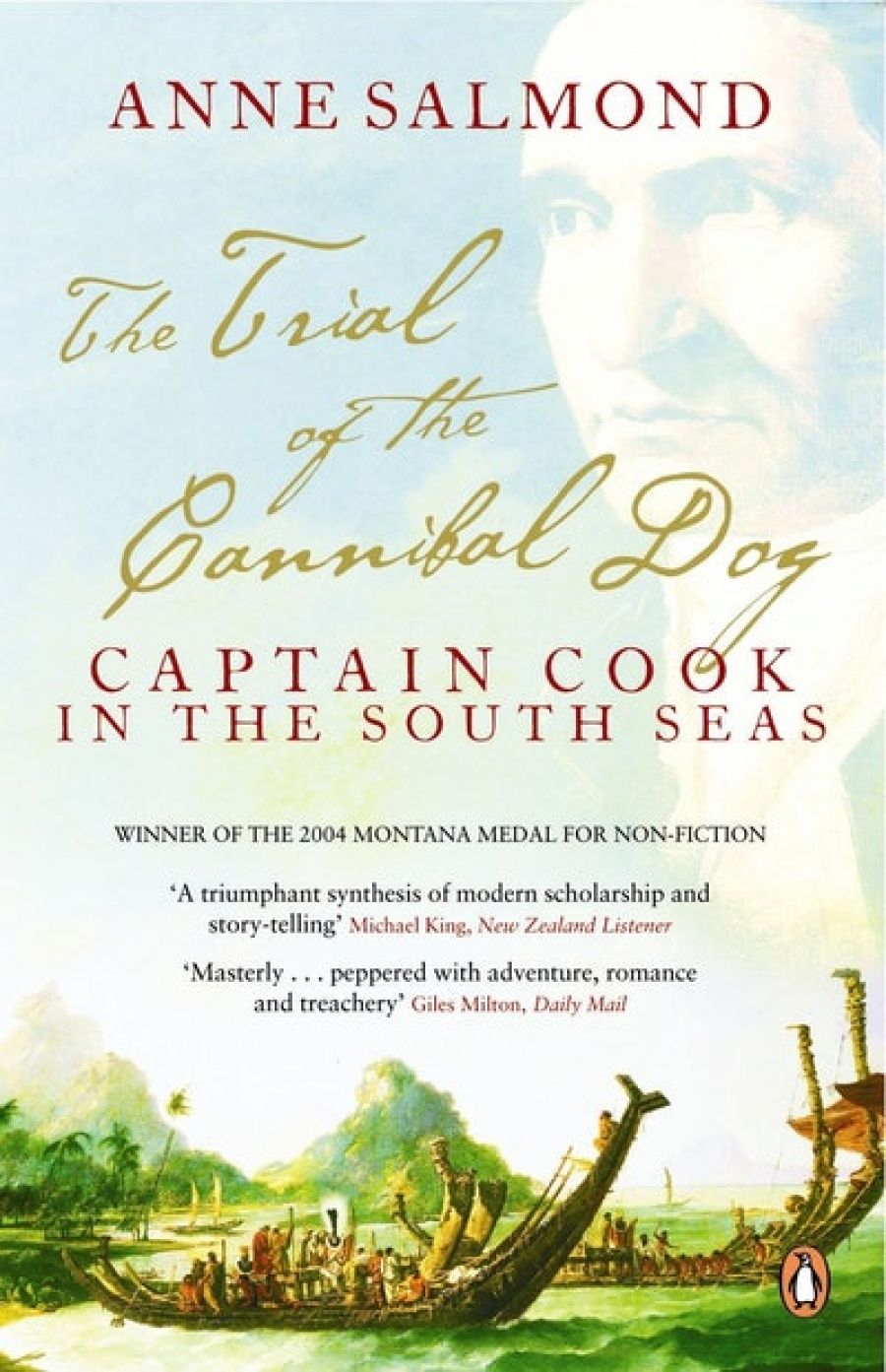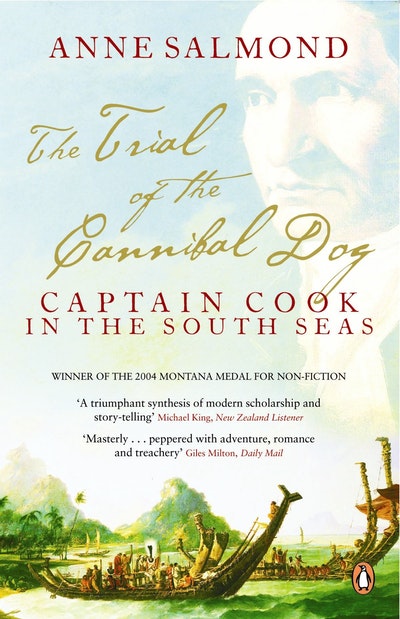
- Free Article: No
- Contents Category: Non-fiction
- Review Article: Yes
- Article Title: Fixing the Bounds
- Online Only: No
- Custom Highlight Text:
From 1768 until 1779–80, in a series of remarkable voyages of circumnavigation, Captain James Cook ‘fixed the bounds of the habitable earth, as well as those of the navigable ocean, in the southern hemisphere’. During these voyages, Cook sailed further, and further out of sight of land, than anyone had previously done. He discovered – or rediscovered – numerous islands. He demonstrated how the new ‘time keeper’ (chronometer) might be used to determine longitude much more accurately than ever before. He showed how scurvy might be controlled. He encountered and left detailed descriptions of peoples about whom Europeans had little or no knowledge. The scientists who sailed with him made very extensive collections of birds, animals, fish and plants, and obtained a wealth of information about the atmosphere and the oceans, all of which contributed significantly to the emergent modern scientific disciplines. In short, as one of his companions observed after his death, ‘no one knew the value of a fleeting moment better and no one used it so scrupulously as [Cook]. In the same period of time no one has ever extended the bounds of our knowledge to such a degree.’
- Book 1 Title: The Trial of the Cannibal Dog
- Book 1 Subtitle: Captain Cook in the South Seas
- Book 1 Biblio: Allen Lane, $49.95 hb, 528 pp
- Book 1 Cover Small (400 x 600):

- Book 1 Cover (800 x 1200):

These were very large achievements for someone who was born to humble circumstances, who ‘had not the advantage of Education’, but who rather was ‘constantly at sea from his youth’. They quickly made Cook one of the heroes of European culture. For 170 years, historians depicted him as one who had brought the light of civilisation to benighted areas of the globe, and who paved the way for some of Britain’s extensive colonisations, which in time gave rise to happy nations.
With the publication of J.C. Beaglehole’s edition of Cook’s journals between 1955 and 1967, Cook studies entered a new phase. Not only did Beaglehole annotate Cook’s journals very extensively, he also included significant extracts from those of his companions, related documents and reproductions of cartographic and artistic records. With the example of Bernard Smith’s European Vision and the South Pacific, 1768–1850 (1960) before them, other scholars tracked down artefacts and records from the voyages that had gathered dust in museums for decades and centuries, publishing catalogues, putting collections and results in context. Cook and his voyages became the focus of specialist conferences and exhibitions. Attendant publications followed: the art of the voyages, annotated editions of other explorers’ journals. By the 1970s Western scholars were enabled to understand just how momentous Cook’s voyages had been.
In the first half of the twentieth century, there was occasional dissent from the celebration of Cook’s greatness. One author wrote of the ‘invasion’ of the Pacific region, another of this invasion’s ‘fatal impact’. In general, however, dissenting voices gathered force only after Britain’s mid-century retreat from empire and the emergence of modern discourses, in particular that of post-colonialism. By the later decades of the century, these voices were prominent and often heard together with reassertions of indigenous cultures in Australia, New Zealand, Tahiti, Hawaii and Canada. Occasionally, they were clamorous beyond all sound historical judgment.(At one conference, I heard a senior scholar say with absolute moral certainty that Captain Cook ‘deserved’ to be killed by the Hawaiians.)
One of the attributes needed to strike a sound balance between platitude and stridency in this complicated matter is a comprehensive knowledge of the now vast historical record. Another is an informed understanding of the dynamics of cross-cultural contact, so as to be able (as Greg Dening put it in discussing the need for ‘two-sided history’) to ‘look through the eyes of men who could not see what they were looking at’. Anne Salmond has both of these attributes. She has been assiduous in searching the records, archival as well as published; and her knowledge of Maori history and ethnography allows her to write authoritatively about culture contact.
There are some very good aspects to this book; nonetheless, it is not altogether successful, faltering in editorial matters large and small, and in organisational ones. There are many examples of ‘try and’, which should be ‘try to’. The name of the southern continent that Cook searched so much for in vain is given in three English versions and two Latin ones, without italics. Indeed, the italicisation of non-English terms is haphazard (e.g., Atua and atua). There is much unnecessary, simple repetition: for instance, ‘Cook’s “black sheep”‘ manage to ‘begin to riot’ on successive pages. As it stands, the book is too long, being bloated by details of the myriad exchanges between Islanders and Europeans. And here, given that the congress between the European men and Polynesian women most often involved neither affection nor repose, surely the blunter ‘had sex with’ would have been preferable to the euphemistic ‘slept with’? The division of the materials into chapters is quite odd, sometimes rendering titles inappropriate (‘A Tahitian at the Opera’ conveys something of the Raiatean Mai’s experience of England, but how is it applicable to that of Cook’s third voyage to the Pacific?). Opening the work with the section ‘The Trial of the Cannibal Dog’ creates an expectation of a Clifford Geertz-like analysis, which is not sustained as the work turns increasingly narrative. It would have been better to include this section in its proper chronological place, where it would have worked much more effectively. It would also have been advisable not to use this as the title of the whole work, which does not adequately convey its scope.
With Dening, Salmond believes that ‘a two-sided historical ethnography is needed’ in order to understand the events of Cook’s voyages. She sustains this point well. Her analysis of the interactions between British and Maori people is repeatedly illuminating. That of the circumstances of Cook’s death at Kealakekua Bay is also very good, introducing new considerations and raising the possibility that brutality and discourtesy as well as cosmology were involved. Most striking of all is her extended account of the extraordinary Tupaia, the arioi priest from Raiatea who evidently knew more about navigation than anyone else in Polynesia; who, as someone from the ancestral homeland and guardian of traditional knowledge, made an enduring impact on the Maori; who constructed a chart with seventy-four islands placed relatively; who learned to draw with European materials; and who, showing that ability also possessed by Cook to go beyond the boundaries of his culture and desiring to extend his knowledge, decided to sail on the Endeavour to England, only to die at Batavia.
But it is also where the work is at its best that Salmond might have done more. Only at one moment in her account of Cook on the eastern Australian coast does she introduce any genuine two-sided ethnography, and then she does not develop it. Nor does she deploy such analysis to illuminate the fundamental conflict that increasingly soured relations between Cook and his officers and men. At least until midway through the third voyage, while Cook was notably reluctant to punish islanders for theft, his men were much more inclined to do so by shooting at fleeing culprits and flogging those captured. Salmond rightly sees Cook’s attitude as the more considered and the less conventional: it was one sign of his unusual imaginative capacity, another of which was his dispassion in the face of such cultural practices as cannibalism and human sacrifice. But there was something other than an instinctive contempt for ‘savages’ at work in the crews’ response to theft. As Nicholas Rodger has pointed out, ‘because ships were paid just before sailing, men often had large sums in cash in their possession, with little privacy or security to protect it. A thief among the ship’s company destroyed its mutual bonds of trust and loyalty more swiftly than anything else.’ Just as the Europeans frequently violated the tapu by which the islanders regulated their lives, so too by incessant thieving did the islanders violate one of the premises by which the sailors made tolerable their cramped lives. At moments, both sides were capable of equal incomprehension.
Readers will learn much from this work. However, with more time spent on it and with the benefit of rigorous editorial advice, it might have been a really distinctive study, rather than one with some distinctive aspects.


Comments powered by CComment